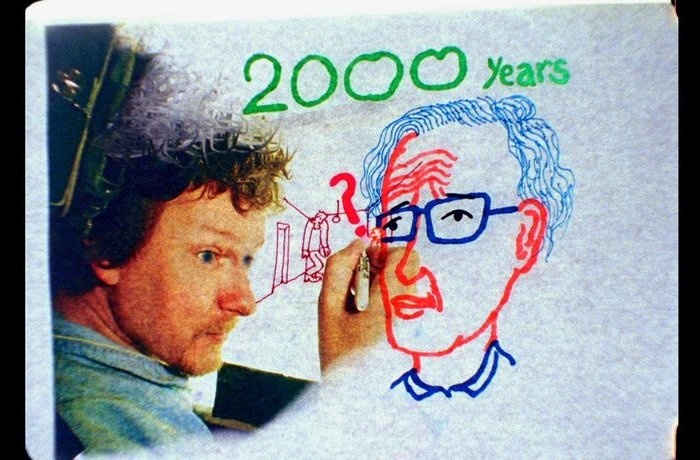
This year our traditional festival program DOCU/ RT, which started symbolically two years ago with the film Ai Weiwei: Never Sorry, refocuses. For two years we have been showing artists-activists who arduously search for escape from arbitrary rule, political tyranny and public opinion prejudices. Last year it was the history itself that confirmed art protest potential. Ukrainian history. But at the same time it deprived us of the opportunity to romanticize art, considers Olha Birzul, program curator. Now it’s high time to discuss its threats and hidden traps.
First of all, we should probably start with the fact that all three films from DOCU/ART program are apparent festival hits. There is no doubt about their high art quality: all film directors have received many awards. I would also like to add that genre variety is excellent: a talented animation for grown-up ‘intellectuals’ from Michel Gondry, a heroic and spectacular epos from Wim Wenders and Juliano Salgado and an exciting detective story from the duo Sam Cullman and Jennifer Grausman. But this is not the only reason; they are also united by the common subject – manipulative power of art. In more detail we will talk about it within our partner program PinchukArtCentre. Olha Tihonova, curator of DOCU/ART discussion platform, prepares interesting meetings, which will be further described in our next announcements.
But why is it manipulation that we speak about in art? Raising the question of manipulation in art, we understand that this sounds a bit speculative. To the artists, manipulation is not something supernatural. It lies a priori in the nature of art: interpreting and transforming reality, the artist is perfectly aware which part of the human body his or her work is aimed at (and if he or she is unaware, the worse it is for the body). However, the apparent simplicity of the issue does not make it out of date. On the contrary, in times when the bait of images, symbols and metaphors is being used more and more frequently in related fields, such as advertisement and politics, we would like to get back to the basics. To the artistic reality which has gone through the author’s imagination, to artificially re-created reality, immersion into which opens new senses and horizons.
It is difficult to find a better assistant in this matter than documentary. On the one hand, it is a genre which claims objectivity, but on the other, keeping in mind the presence of operator and editor, it is impossible to elude subjectivity completely. Therefore, in all three films included in DOCU/ART program, the author's position is not just highlighted – it sets the whole background. In the film Is the Man Who Is Tall Happy, director Michel Gondry actually presents his own interpretation of complex philosophical reasoning by the American intellectual Noam Chomsky. Given that Gondry uses animation, which is his most convincing talent, Chomsky's theories tend to fall by the wayside. It is impossible to ignore how Wim Wenders in his Salt of the Earth admires his character and even romanticizes him. The situation in Art and Craft is even more interesting. Who is manipulating whom in the case of Mark Landis, the most eccentric art forger in US history, is a big question.
Viktor Pelevin wrote, "The dog looks at the stick, and the lion looks at the one who threw it". To see the substitution of meanings, one does not have to be a lion. Simply remember the stick.
Olha Birzul, curator of DOCU/ART program
Program partner: PinchukArtCentre